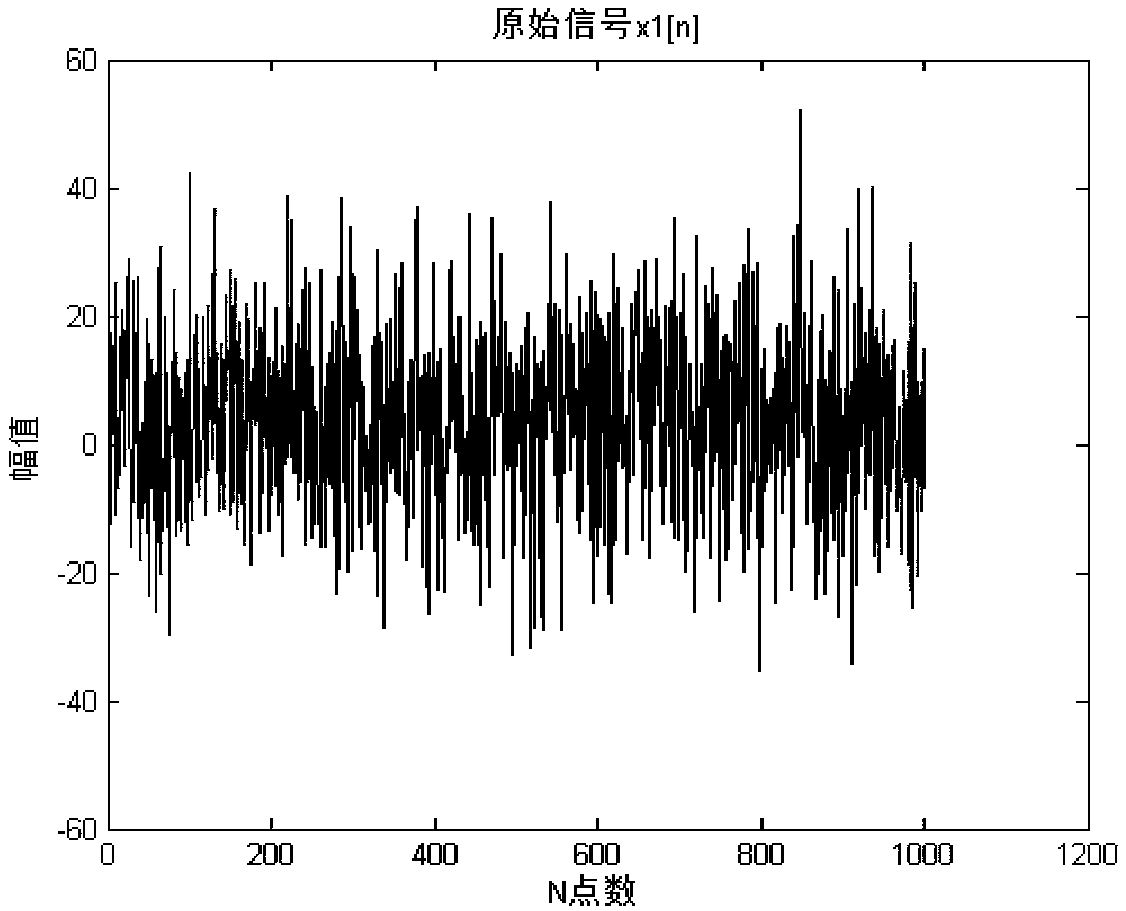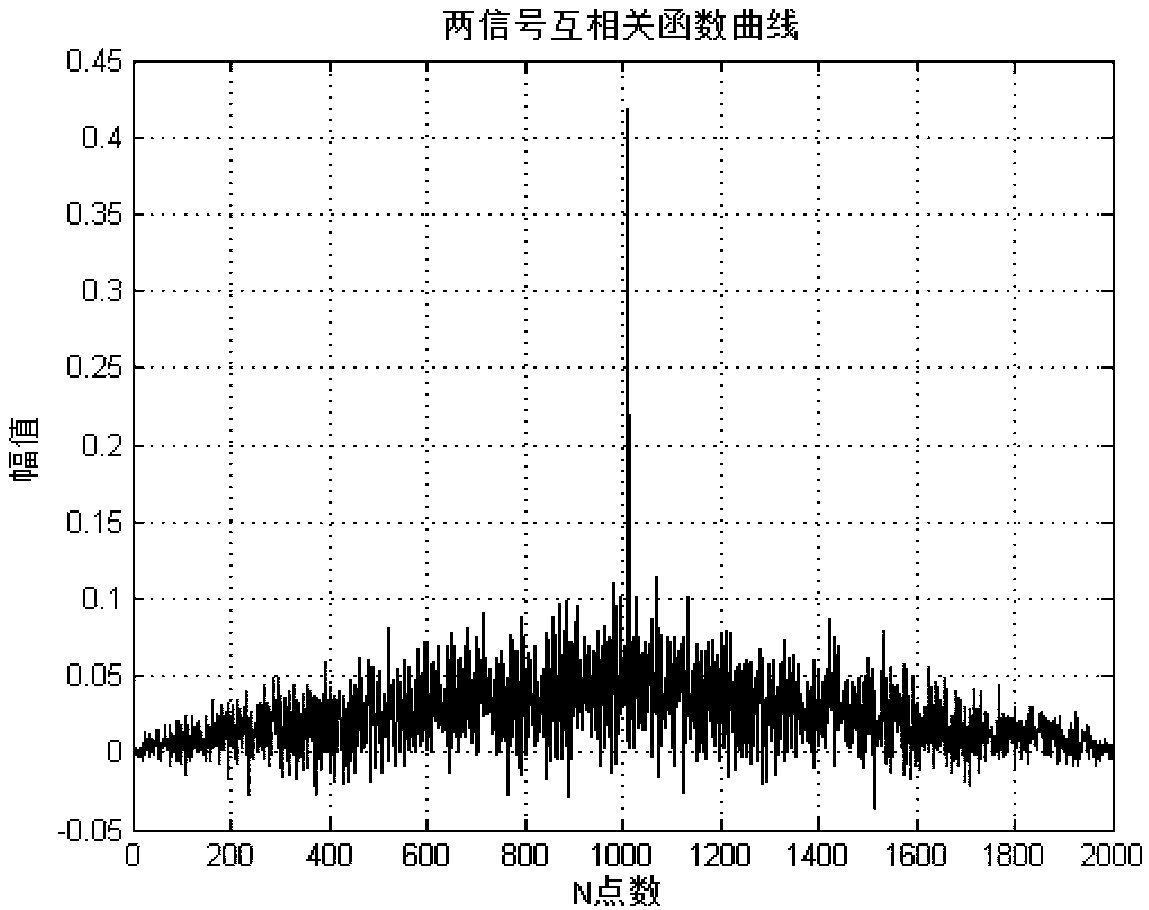Complex signal time delay estimation method based on least square sample fitting
A time-delay estimation and least-squares technique, applied in the field of improving the performance of time-delay estimation for Gaussian signals, can solve problems such as low accuracy of time-delay estimation
- Summary
- Abstract
- Description
- Claims
- Application Information
AI Technical Summary
Problems solved by technology
Method used
Image
Examples
Embodiment Construction
[0066] The specific embodiments of the present invention will be further described below in conjunction with the accompanying drawings.
[0067] The least squares sample fitting delay estimation method of this embodiment includes the following steps:
[0068] S1, establish passive delay estimation model: (such as figure 1 , figure 2 shown)
[0069] x 1 [n]=s[n]+z 1 [n], n=0,1,...,N-1,
[0070] x 2 [n]=αs[n-D]+z 2 [n], n=0,1,...,N-1,
[0071] Generate three uncorrelated complex Gaussian sequences s[n], z 1 [n] and z 2 [n], and assume make Therefore z 1 [n] and z 2 [n] have the same power.
[0072] S2. Model assignment in step S1: attenuation coefficient α=1, time delay D=0.01, number of points N=1000.
[0073] S3, give the cost function corresponding to the model After expanding the cost function, take out the cross-correlation function part
[0074] S4. Use the interpolation formula to transform the result obtained in step S3, and give the cost function ...
PUM
 Login to View More
Login to View More Abstract
Description
Claims
Application Information
 Login to View More
Login to View More - R&D
- Intellectual Property
- Life Sciences
- Materials
- Tech Scout
- Unparalleled Data Quality
- Higher Quality Content
- 60% Fewer Hallucinations
Browse by: Latest US Patents, China's latest patents, Technical Efficacy Thesaurus, Application Domain, Technology Topic, Popular Technical Reports.
© 2025 PatSnap. All rights reserved.Legal|Privacy policy|Modern Slavery Act Transparency Statement|Sitemap|About US| Contact US: help@patsnap.com



